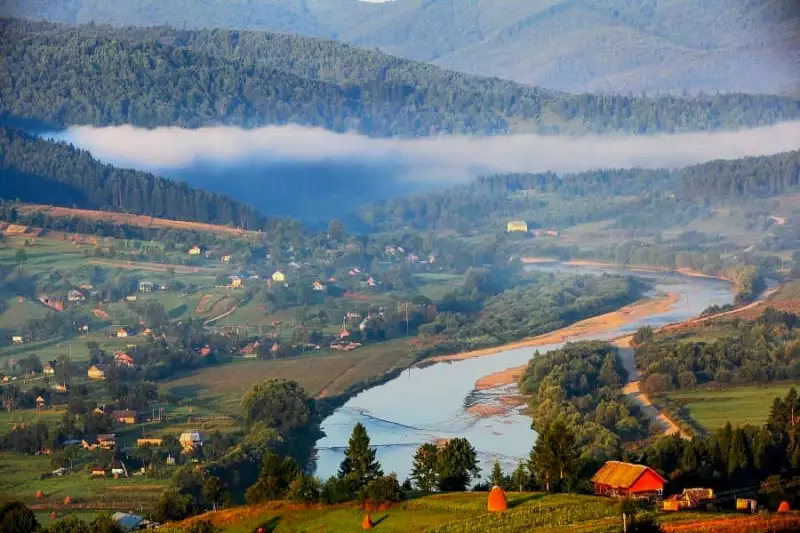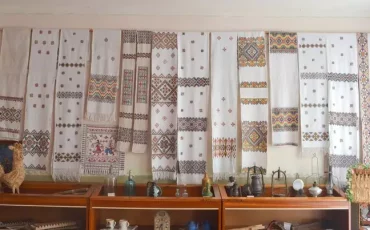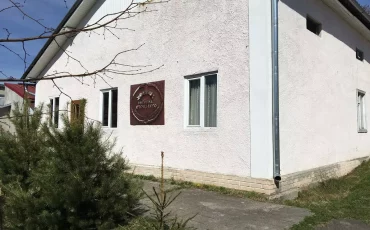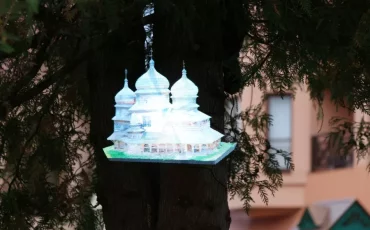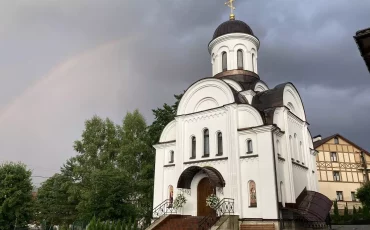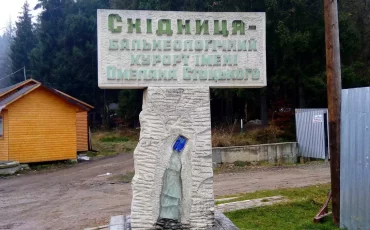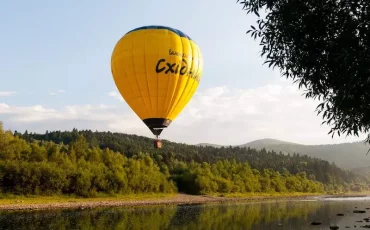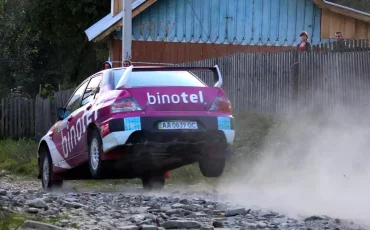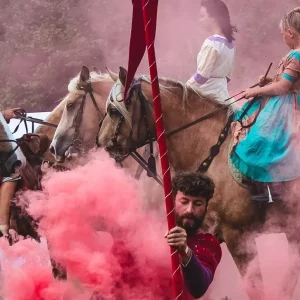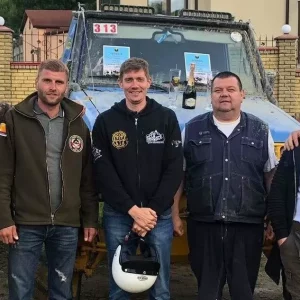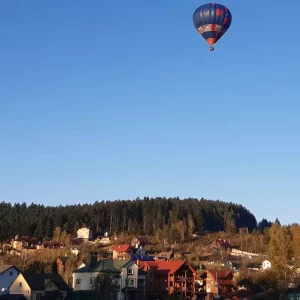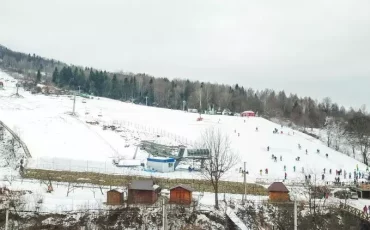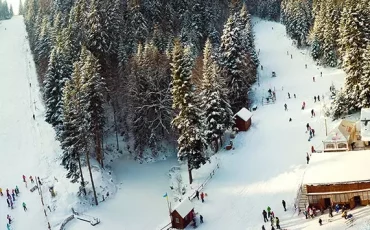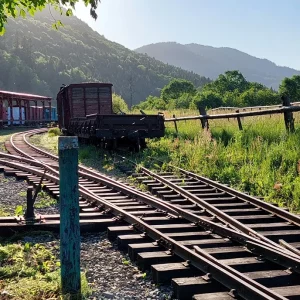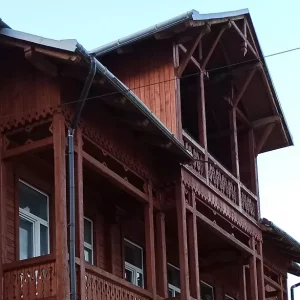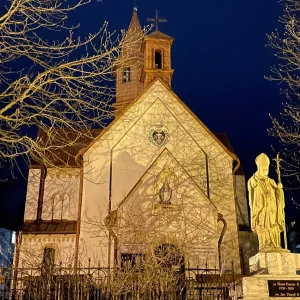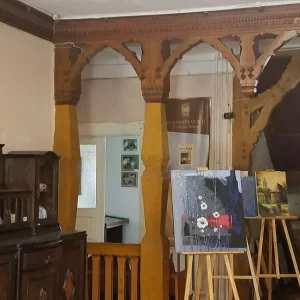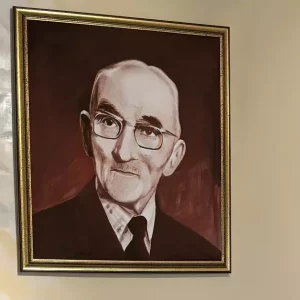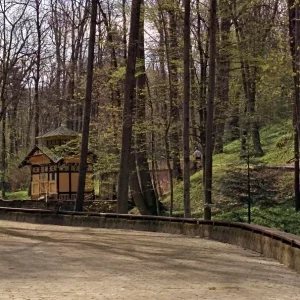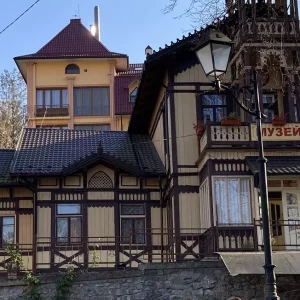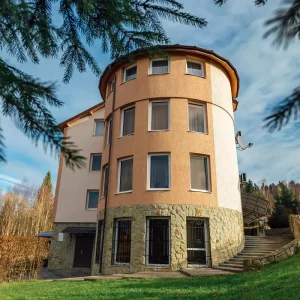The history of Skhidnytsia dates back to the times of Kyivan Rus, when the settlement of Zolota Banya existed on its site. The name is most likely derived from the ancient salt-making industry in wooden buildings called “baths”. In the Middle Ages, salt was known as “white gold” because it was very valuable and always in short supply. According to another version, the name ” Zolota Banya” was formed from the Latin baneum (balneum) and the Greek balaneion, which means “bath, bathhouse, resort”. According to the third version, in Old Russian times the word “banya” meant “pit”. This is because the settlement was surrounded by mountains and it felt like being in a pit. At that time, oil, which was always plentiful here, was valued more than gold.
In 1240-1242, the Tatar-Mongol hordes of Batu Khan devastated the settlement of Zolota Banya.
There are several versions of the origin of the modern name of the village. The most popular hypothesis connects the name Skhidnytsia with the history of these lands after Batu Khan’s invasion. The surviving residents of Zolota Banya and other settlements began to “come together” to build a new settlement. The new town was named Skhidnytsia from the word “to come together”. Another version, authored by local historian Yaroslav Olkhovyi, connects the name of the settlement with the Skhidnychanka river, whose rocky ledges and stepped banks resemble a staircase.
The first written references to Skhidnytsia are found in Polish documents of the 14th century. At that time, the Galicia-Volyn principality was occupied by foreign conquerors, and Skhidnytsia became part of Poland for a long time.
Polish nobles began to displace the local elite. This process was completed in the late 16th and early 17th centuries. Since then, until 1939, the Polish elite dominated all spheres of life in Skhidnytsia.
In the Middle Ages, the Poles built a lordly castle with wooden and earth fortifications in the very centre of modern Skhidnytsia. It was used as a fortress until the XVIII century.
The peasants in Skhidnytsia did not receive large harvests due to the infertile land. Their lives were accompanied by constant wars, epidemics and natural disasters in the form of floods. In addition, the local population suffered greatly from social and national-religious oppression by the Polish elite. Popular discontent often escalated into armed uprisings against the oppressors. For example, in 1648, local peasants rose up in an uprising that resulted in the liquidation of Mykola Hrodski, the contractor-owner of Skhidnytsia. In the second half of the seventeenth century, the life of Skhidnytsia residents deteriorated even further due to frequent Tatar raids. The worst attack took place in 1672. Skhidnytsia then suffered great losses and destruction.
After the first partition of the Polish-Lithuanian Commonwealth in 1772, Skhidnytsia became part of the Habsburg Empire (from 1804 – the Austrian Empire, from 1867 – Austria-Hungary) and was part of the Sambir district. At that time, life in Skhidnytsia stabilised as Tatar raids stopped. In addition to agriculture, the woodworking industry began to develop in Skhidnytsia. In 1858, the oil era began in Skhidnytsia. The village turned into a powerful industrial centre for the extraction of oil and ozokerite.
Already in 1898, oil production in Skhidnytsia reached a record 168 thousand tonnes of oil from 373 wells. In addition to Polish entrepreneurs, Belgian, British, French and American investors were active here. As a result of the economic boom, the population of the village began to grow rapidly.
A new milestone in Skhidnytsia history began in the second half of the 20th century. It was in 1956 that researcher Omelyan Stotsky discovered the healing properties of local mineral waters in Skhidnytsia. It happened by accident. While retired and walking in the woods, he came across a spring with a pungent hydrogen sulphide smell. This led him to believe that such water could have the same healing properties as Truskavets Naftusia. He argued that these waters help to improve metabolism, kidneys, the gastrointestinal tract, normalise liver and gallbladder functions, and remove toxins. To prove his point, he had to fight the Soviet bureaucratic system for years. In 1970, the Karpaty sanatorium (now Skhidnytsia Karpaty) was opened on the basis of local mineral waters. However, it was only on 9 January 1976 that Skhidnytsia was officially recognised as an All-Union resort, which was a great victory for the researcher and radically changed the life of the village. Since then, Skhidnytsia has been developing as a major balneological resort and tourist centre in the Ukrainian Carpathians. The local mineral waters are used to treat kidney and liver diseases, salt diathesis, stomach acidity, anaemia, diabetes, etc.
